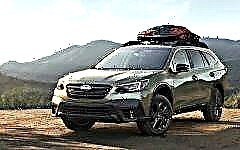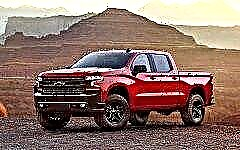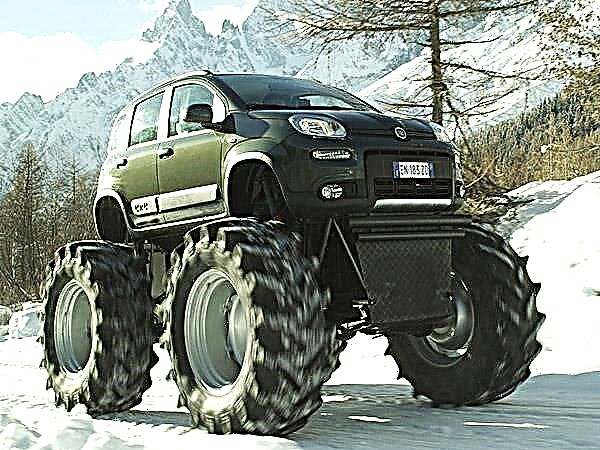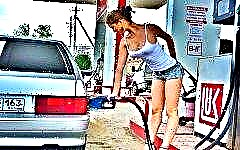

The content of the article:
- Ways to reduce fuel consumption
- Additional tricks
The threat of an oil crisis has been hanging over the world for a long time, periodically erupting with economic disasters. Therefore, the leaders of each country are constantly trying to save as much as possible the consumption of energy resources. Automakers support this program, for their part, developing more fuel-efficient cars. Of course, the domestic auto industry is far from such technologies, but foreign colleagues have achieved excellent success in this indicator.
From a subjective point of view, saving gasoline is very important for car owners due to constantly rising fuel prices. Someone switches to diesel cars, someone dares to use hybrids in order to somehow reduce their costs. However, there are other ways how to actually reduce fuel consumption that drivers do not know about or do not consider them significant.
The most basic principle is an integrated approach, because only careful care and attention to your car will give a tangible result for the owner's budget.
Ways to reduce fuel consumption
Logbook
Each driver must record the entire volume of fuel poured into the car. By the way, similar recommendations are given by the automakers themselves, recommending to write down the date and volume of tank refills, the type of fuel and other important information in the logbook. Subsequently, according to the records, it will be easy to monitor the technical health of the car, and if negative dynamics are detected in time, suspect a malfunction and contact a car service.
Warming up the engine

The newest lubricants become more fluid at low temperatures, and they heat up much faster than their predecessors. Therefore, for years, the grafted ritual of warming up the car for a long time before starting the movement is currently not only meaningless, but also wasting gasoline completely in vain. Just one minute is enough to warm up the engine, after which you can start a smooth movement. And after 5-10 minutes the car will be completely ready for any operating conditions.
Movement without flushing
When the owner also adds gas during ignition activation, this has a very negative effect on the engine. In addition to increased absorption of fuel, this procedure wears out the starter and engine parts. Once it was relevant for carburetor engines so that fuel gets into it faster and prepares the fuel system for operation. But with a direct fuel injection system, the accelerator pedal for starting the car becomes unnecessary.
Tachometer
Its readings directly affect the consumption of gasoline. The higher the number of revolutions, the more fuel will be "eaten up". You need to try to increase the speed at the most optimal speed for the engine - this is an ideal way to reduce fuel consumption. For urban mode, this is usually 2 thousand revolutions for a diesel engine or 2.5 thousand for gasoline. If the gear is upshifted too early, the cylinders and pistons will wear out faster before reaching sufficient revs than will cause an increased appetite for the engine.
Gas
If, during acceleration, the gas is added too slowly, excessively stretching the "takeoff", the fuel will go many times more actively. Gas is added confidently, evenly, at medium speeds, which for diesel engines are in the range of 2-2.5 thousand and 2.5-3 thousand for gasoline engines.
Start
A spectacular start from a standstill, as in Hollywood films, eats up a large amount of fuel in one fell swoop. Therefore, it is recommended to get under way in a traditional, smooth way, without jerks and special effects.
Travel speed

To determine how to reduce the fuel consumption of a car, you need to know the maximum effective engine run time. It depends on the type of engine, transmission, vehicle weight, aerodynamics and a number of other factors. At this time, the car works stably, moderately powerfully and at the same time absorbs a minimum of fuel.
Having found out this interval by technical indicators or by experience, it is advisable to adhere to the appropriate driving mode for any trips. But driving at high speeds, over 100 km / h, as well as sharp maneuvers, frequent lane changes, requires a very large amount of fuel.
Additionally, it will be useful to learn not to make unnecessary stops. For example, seeing from afar that it will not be possible to slip through the traffic light, you should reduce the speed as much as possible and carefully roll up to it until the moment when it is “green” again.
The same applies to keeping the distance. In a stream of any density, one should try to keep a distance sufficient for uniform, non-stop movement.
Engine braking
This method consists in gradually downshifting or coasting without adding throttle. If you need to make a turn, this can be done by a competent dosage of the gas supply. Failure to use the brake to reduce torque will help to significantly conserve fuel reserves, and at the same time make the journey itself safer, especially on slippery roads.
Terrain relief
When descending the hill, it is better to throw off the gas, the usual gravitational force will act for the engine. But at the same time, the gear should be switched to a higher one, then the system is activated, which reduces the supply of fuel to the cylinders.
Idling
The belief that idling is harmless to the engine is not true. Even in 10 seconds of such work, he will spend several times more fuel than during the start or start of movement. If the driver needs to stop in front of a traffic light, answer a call or check with the navigator, it is recommended to completely shut off the engine.
Reverse and "automatic"
Cars equipped with "automatic" have the ability to move on a good, level surface without the use of gas. Modes "D" and "R" activated will send enough torque to the wheels to get the car moving. This is an effective method for reversing.
Additional tricks
Cruise control

Installing and using this system correctly is another effective way to reduce fuel consumption. So, on a good, flat track, cruise control will significantly reduce the car's appetite. But on roads with turns, inclines and climbs, it is better to turn off the system so that the "automatic" does not change gears unnecessarily.
Parking
Each driver tries to choose the most convenient parking spot. In addition to being practical, it will also have a beneficial effect on the financial component. Leaving a comfortable position will require less maneuvers and, accordingly, less fuel consumption. For the same reason, you should not go in reverse, since such a movement is expensive compared to a similar exit in front.
Vehicle operation

A roof rack, even if it has no contents inside, increases aerodynamic drag. This causes an increase in fuel consumption by 5%, and with a loaded trunk - by 40%. Therefore, when moving without luggage, it is better to remove it from the roof.
The same applies to any other excess ballast that may be in the hold or in the cabin. Things you forgot to lay out, unnecessary tools make the car as a whole heavier, requiring more fuel.
Replacing filters is important in order to reduce fuel consumption at VAZ.If these parts are not monitored, not only will the motor itself wear out and lose efficiency, but it will also consume more fuel.
It is advisable to listen to the manufacturer's recommendations for the use of engine oil. The brand that best matches the technical characteristics and operating conditions will increase the engine power, and at the same time save the car owner's budget.
Some car owners do not bother to completely clear the car of snow, limiting themselves to only the windshield. Thus, they increase aerodynamic drag, causing unnecessary stress. Even dirt adhering to the body and bottom can affect the vehicle's resistance and performance. Therefore, it is necessary to allocate a sufficient amount of time for the hygiene of your own vehicle, as well as apply body mastics that increase its aerodynamics.
In no case should you move on semi-flat tires, which requires more area for the contact of the wheels with the road surface and increases friction. For the same reason, it is important to control tire pressure during significant temperature changes.
These simple tips on how to reduce fuel, gasoline or diesel consumption will really help you save a significant amount if you just follow them regularly and in combination.











